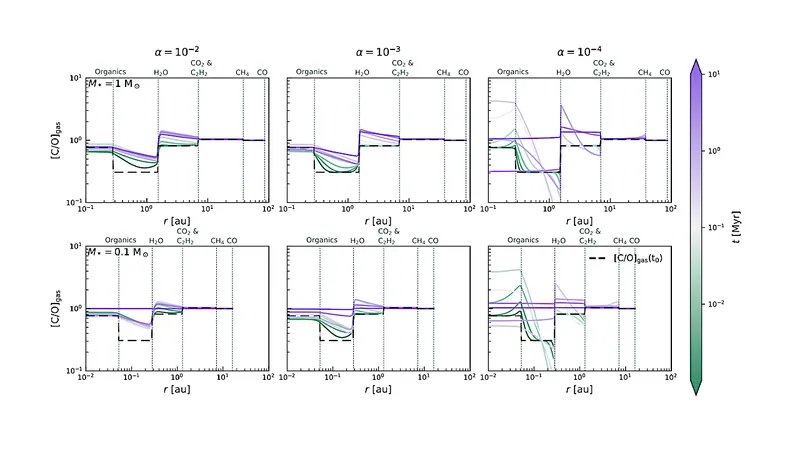
Cosmic Secrets Revealed: How Organic Structures Shape Planetary Formation in Protoplanetary Disks
2025-05-28
Author: Wei Ling
Unearthing the Carbon Mystery in Space
In the vastness of protoplanetary disks, carbon holds a coveted spot, primarily as refractory organics. These complex molecules undergo thermal decomposition near a critical juncture in the disk, known as the organics line, situated well inside the icy boundary where water is found.
The Misconception of Gas Accretion
Traditionally, scientists believed that the scorching conditions near a star would lead to rapid accretion of any gas released from degrading organics, implying minimal impact on the overall composition of the disk. However, groundbreaking laboratory experiments reveal a different story.
The Irreversible Transformation of Organics
The thermal breakdown of refractory organics is an irreversible process, converting these macromolecular structures into simpler, volatile carbon compounds. Unlike other volatile substances like water, which can re-condense back into solid form, the organics line remains constantly 'leaky'. This means gaseous carbon can migrate outwards, fostering an abundance of carbon molecules in regions far from their point of origin.
A Game Changer for Planet Formation
In a recent study, researchers utilized a 1D evolution model to better understand how this gas-phase transformation alters the configuration of the disk. They focused on carbon's journey, particularly how it anchors itself in forms like C2H2. Astonishingly, findings indicated that carbon-rich gases might persist up to 7 astronomical units (AU) from a solar-mass star, increasing their presence a staggering tenfold.
Implications for Cosmic Development
This newfound resilience of gaseous carbon poses vital implications for how planets develop. As it influences the relationships between solid and gaseous elements, it shifts the landscape of heavy elements accessible for forming giant planets. Importantly, it also suggests significant modifications in gas-phase C/O ratios, enhancing our ability to interpret observational data gathered by telescopes like Spitzer and JWST.
The Research Team Behind the Breakthrough
This exciting research was conducted by a team of astrophysics experts, including Adrien Houge, Anders Johansen, Edwin Bergin, Fred J. Ciesla, Bertram Bitsch, Michiel Lambrechts, Thomas Henning, and Giulia Perotti, and is set to be published in A&A.
 Brasil (PT)
Brasil (PT)
 Canada (EN)
Canada (EN)
 Chile (ES)
Chile (ES)
 Česko (CS)
Česko (CS)
 대한민국 (KO)
대한민국 (KO)
 España (ES)
España (ES)
 France (FR)
France (FR)
 Hong Kong (EN)
Hong Kong (EN)
 Italia (IT)
Italia (IT)
 日本 (JA)
日本 (JA)
 Magyarország (HU)
Magyarország (HU)
 Norge (NO)
Norge (NO)
 Polska (PL)
Polska (PL)
 Schweiz (DE)
Schweiz (DE)
 Singapore (EN)
Singapore (EN)
 Sverige (SV)
Sverige (SV)
 Suomi (FI)
Suomi (FI)
 Türkiye (TR)
Türkiye (TR)
 الإمارات العربية المتحدة (AR)
الإمارات العربية المتحدة (AR)